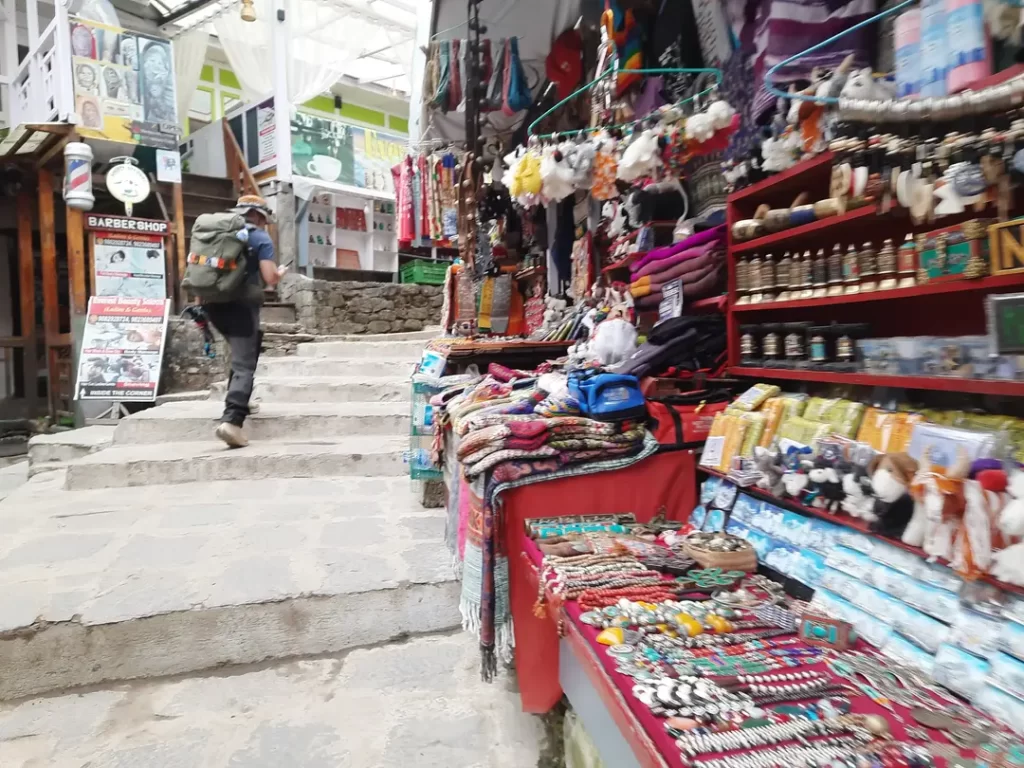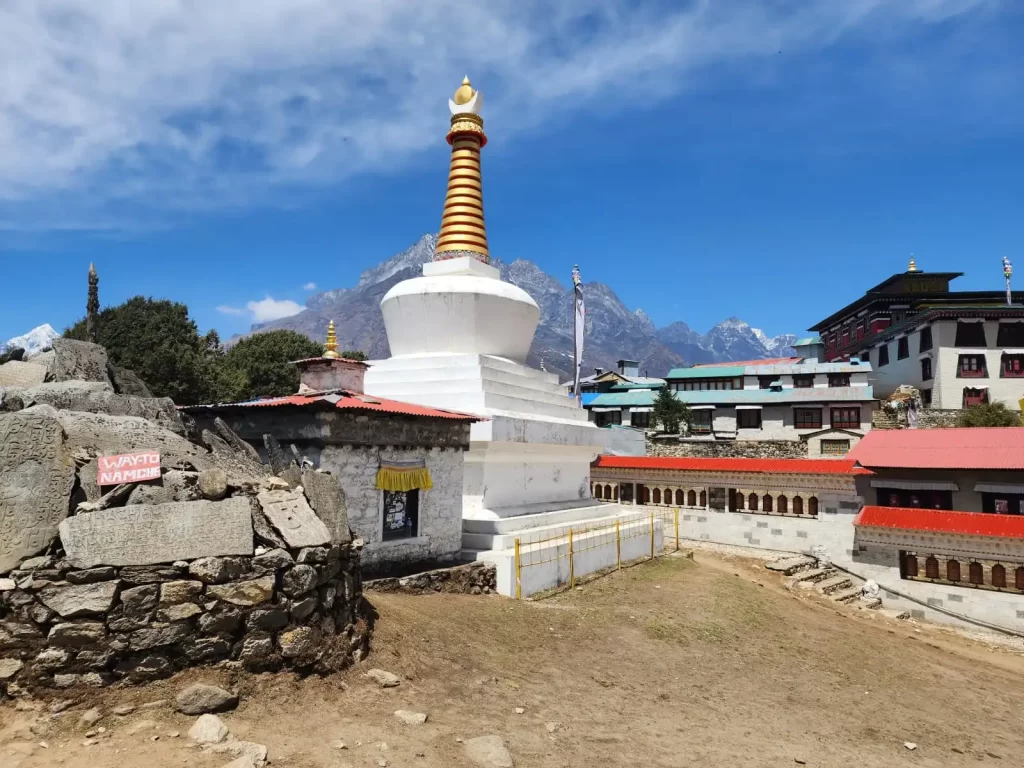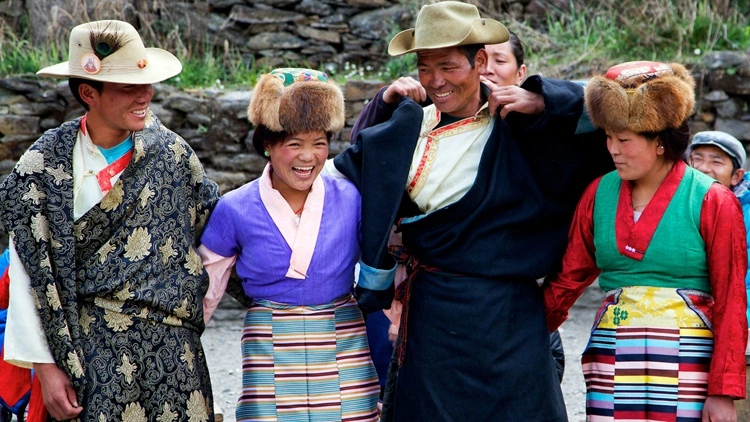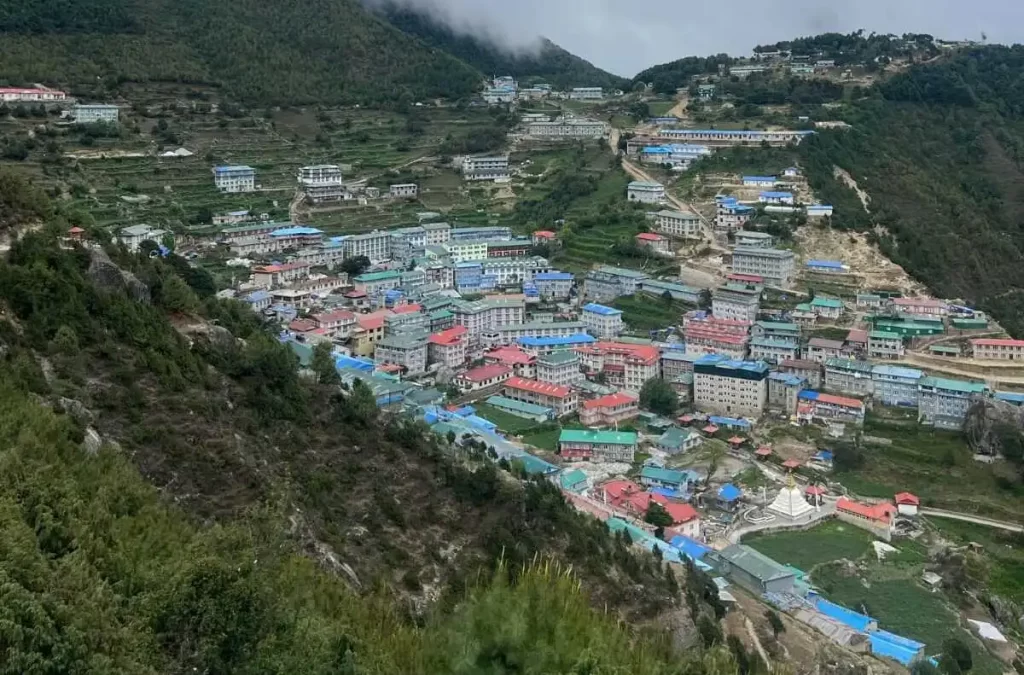The Sherpa People: Origins, History, Culture, and Life in the Everest Region
Introduction to the Sherpa People
Who Are the Sherpa?
The Sherpa people are a Himalayan ethnic group native to Nepal, most famously associated with Mount Everest, the world’s highest peak. Known for their strength and resilience, they are experts in high-altitude mountaineering and have been essential companions for international climbers scaling the Himalayas.
While their reputation as climbing guides is globally recognized, the Sherpas’ culture, lifestyle, and values are equally remarkable yet lesser-known aspects. They live in some of the most extreme environments on Earth, including the Solu-Khumbu region, where altitudes reach thousands of meters above sea level.
Their lives are a testament to human adaptation, shaped by the mountains, and their strong spiritual connection to their land reflects their harmonious existence with nature. By understanding more about their origin, culture, and lifestyle, we gain a deeper appreciation for this resilient community that has become an essential part of Nepal’s heritage.
Importance of the Sherpa in Mountaineering
Sherpas are celebrated worldwide for their invaluable role in Himalayan mountaineering, particularly on Mount Everest, where their support is crucial to the success and safety of climbers from all corners of the globe.
Beyond merely serving as guides, they carry heavy loads of equipment and supplies, set up and dismantle camps, navigate dangerous routes, and provide critical advice and support. This work comes with high risks; they often face avalanches, frostbite, and altitude sickness, yet their expertise in the mountains is unparalleled.
With their physiological adaptations to high altitudes, including efficient oxygen use, Sherpas are naturally suited to mountain life, making them indispensable for these treacherous expeditions. Over the years, the name “Sherpa” has become synonymous with endurance, courage, and loyalty, qualities that have made their role legendary in the mountaineering world.
Legendary Sherpas: Icons of the Himalayas
Throughout history, several Sherpas have achieved legendary status due to their remarkable feats in mountaineering and their contributions to the Everest community. Their resilience, bravery, and unmatched skills have made them iconic figures, celebrated not only in Nepal but around the world.
Tenzing Norgay Sherpa
Tenzing Norgay is perhaps the most famous Sherpa, known for his historic ascent of Mount Everest with Sir Edmund Hillary on May 29, 1953. This landmark achievement made him a global icon, symbolizing the courage and strength of the Sherpa people. Tenzing’s role was pivotal in this first confirmed successful summit of Everest, and his humility and dedication to mountaineering continue to inspire climbers worldwide.
Apa Sherpa – “The Super Sherpa”
Apa Sherpa, also known as “The Super Sherpa,” is a record-breaking climber with 21 successful ascents of Mount Everest. Apa has dedicated his life to supporting the Sherpa community and raising awareness about the environmental challenges facing the Himalayas. His accomplishments highlight the extraordinary endurance and resilience of Sherpas in high-altitude environments.
Phurba Tashi Sherpa
Phurba Tashi is another legendary figure, with over 30 successful climbs to the summits of Everest and other Himalayan peaks. Known for his calm demeanor and leadership, Phurba has led many expeditions and has often been featured in documentaries, showcasing the risks and challenges that Sherpas face. His experience and expertise have earned him immense respect in the mountaineering world.
Pasang Lhamu Sherpa – A Trailblazing Woman
Pasang Lhamu Sherpa became the first Nepali woman to summit Mount Everest in 1993, breaking significant barriers in a male-dominated field. Her achievement empowered many Sherpa women to pursue their dreams in mountaineering and beyond. Pasang’s courage and determination continue to serve as an inspiration for women in Nepal and around the world.
Kami Rita Sherpa
Kami Rita Sherpa is a current record-holder with 28 successful summits of Mount Everest, demonstrating incredible stamina and expertise. Known for his dedication to mountaineering, Kami Rita continues to break records with each ascent, solidifying his place as one of the greatest Sherpas in history.
These legendary Sherpas have not only pushed the limits of human endurance but have also paved the way for future generations of climbers. Their stories symbolize the courage and spirit of the Sherpa community and highlight the invaluable role Sherpas play in Himalayan mountaineering.

The Origins of the Sherpa
Migration from Eastern Tibet
The Sherpa people’s journey to their current home began around 500 years ago, originating in Tibet’s Kham region in the east. Seeking new opportunities and more fertile land, they crossed the daunting Himalayan ranges to settle in what is now Nepal. The term “Sherpa” itself means “eastern people,” derived from the Tibetan words “shar” (east) and “pa” (people), a nod to their roots in eastern Tibet.
This migration was not an easy feat; it required resilience and adaptability, as the Sherpa had to adjust to a new environment and high-altitude challenges. Their historical journey has shaped their culture and identity, helping them develop a deep connection to their surroundings and a lifestyle that is in sync with the mountains that now define their homeland.
Reasons Behind Their Migration
Historical records and oral histories offer varied reasons for the Sherpa migration. Some believe they fled from warfare or conflicts in Tibet, while others suggest they were seeking religious freedom and the opportunity to practice their Tibetan Buddhist beliefs peacefully. Moving to Nepal’s mountainous terrains provided a sense of continuity for their cultural identity.
The new environment resembled Tibet’s landscapes, helping them settle and thrive. Over generations, the Sherpa adapted to their new homeland, forming villages and establishing communities in the Solu-Khumbu region, where they developed a lifestyle and identity centered around the mountains. Their migration journey reflects their ability to not only survive but thrive in harsh, isolated environments.
Settling in the Solu-Khumbu Region
The Solu-Khumbu region of Nepal, known for its stunning peaks and pristine valleys, became the Sherpas’ primary settlement. This area is rich in natural beauty and culturally significant as it surrounds Everest, a mountain sacred to the Sherpa.
Living in these high altitudes has molded the Sherpa way of life, from their architecture and agriculture to their social structures and spiritual beliefs. The relative isolation of Solu-Khumbu also enabled the Sherpas to preserve their unique customs, free from significant outside influence until the advent of modern tourism.
Even today, Sherpa villages maintain a sense of timelessness, with stone houses, vibrant prayer flags, and monasteries dotting the landscapes, reinforcing the community’s connection to their land and Buddhist faith.
Historical Significance of the Sherpa Community
The Sherpa community played an instrumental role in shaping the development of the Everest region, especially as it grew into a popular trekking and climbing destination. Before the arrival of international mountaineers, the Sherpas lived modest lives, primarily relying on agriculture and trade.
However, as climbers began to arrive, the Sherpas’ knowledge of the land and natural climbing abilities proved invaluable. They became the primary guides and supporters for foreign expeditions, making it possible for climbers to attempt the summit.
Over time, the Sherpas helped build essential infrastructure, including trails, lodges, and communication facilities, transforming Everest into a major attraction for adventure seekers. The region’s economy has flourished thanks to their efforts, and the Sherpas have contributed to making Nepal one of the world’s top trekking and climbing destinations.
Contributions to Nepali Economy and Tourism
The Sherpas’ contribution to Nepal’s economy, particularly through tourism and mountaineering, is substantial. Trekking and climbing expeditions attract thousands of tourists to Nepal annually, generating millions in revenue that benefits not only the local economy but also Nepal’s national economy.
By providing guiding services, hospitality, and logistical support, Sherpas have created jobs and income streams that sustain their communities. Many Sherpa families now operate businesses such as lodges, tour companies, and shops, further supporting Nepal’s economy.
Their dedication has fostered economic growth in the Everest region, helping improve infrastructure, education, and healthcare. Sherpa communities continue to evolve and adapt, finding a balance between tradition and modernity as they welcome climbers and tourists while preserving their cultural identity.

Sherpa Culture and Traditions
Religious Beliefs – Tibetan Buddhism
The Sherpa are followers of Tibetan Buddhism, a faith that permeates all aspects of their life, from daily routines to community gatherings. Tibetan Buddhism emphasizes compassion, the impermanence of life, and the interconnectedness of all beings—principles that align closely with the Sherpas’ way of life.
The landscapes of Solu-Khumbu are dotted with monasteries, stupas, and prayer flags, which serve as both religious symbols and reminders of the Sherpas’ spiritual connection to their surroundings. The vibrant monasteries, often led by high-ranking lamas or monks, are central to the community, providing spiritual guidance and serving as places of worship and learning.
Religious practices include rituals, prayers, and meditation, and significant events often involve blessings from lamas, who are highly respected within Sherpa society.

Festivals and Celebrations
The Sherpa community celebrates several festivals rooted in Tibetan Buddhism, each carrying its own significance and customs.
Losar – Tibetan New Year
Losar, or the Tibetan New Year, is one of the most celebrated events for the Sherpa. Marked by gatherings, feasting, and prayers, Losar is a time of renewal and gratitude, signifying the beginning of a new cycle. Families clean their homes, visit monasteries to seek blessings, and come together to share meals. Traditional dances and songs are performed, and monks chant prayers to ward off negativity and invite good fortune. This festival showcases the Sherpas’ close ties to their faith and community, reinforcing cultural bonds.
Dumji Festival
The Dumji Festival is another significant celebration, honoring Guru Rinpoche, the revered figure who introduced Buddhism to Tibet. Held annually, this festival is known for its colorful masked dances performed by monks, which symbolize the triumph of good over evil. Villagers come together to celebrate with music, food, and games, strengthening communal bonds. It’s a time for joy, social interaction, and spiritual reflection, illustrating the Sherpas’ devotion to preserving and celebrating their faith and traditions.
Traditional Clothing and Attire
Sherpa attire is both functional and symbolic, designed to withstand the cold, harsh conditions of the Himalayas. Men wear woolen chubas, long-sleeved coats that offer warmth and protection, while women wear colorful dresses with aprons, often adorned with traditional jewelry made from silver and beads. These garments are not only suited to the weather but also serve as expressions of identity, connecting the Sherpas to their Tibetan heritage. Traditional Sherpa attire, worn during festivals and religious ceremonies, emphasizes modesty, resilience, and pride in their cultural heritage.

Sherpa Language and Communication
The Sherpa language, a member of the Tibeto-Burman family, shares close linguistic ties with Tibetan. While primarily an oral language, efforts to formalize it in written form have gained momentum, particularly with the introduction of education programs aimed at preserving their linguistic heritage. Language is a crucial element of Sherpa identity, enabling them to communicate within their community and keep alive traditional wisdom passed down through generations. As modern influences reach Sherpa villages, there is a renewed focus on preserving the language, which connects them to their Tibetan ancestry.
Given their interactions with international visitors, Sherpas are often fluent in multiple languages, including Nepali, English, and sometimes other foreign languages. This multilingual ability helps them serve as effective communicators, enabling them to act as cultural ambassadors who bridge the gap between tourists and the local community. Their language skills reflect their adaptability, allowing them to connect with people from diverse backgrounds while promoting a positive image of Nepal and its rich cultural heritage.
Lifestyle in the Himalayas
Life at high altitudes presents unique challenges, from thin air to rugged terrains, yet Sherpas thrive in this environment due to generations of adaptation. Their bodies have developed physiological traits that enable them to use oxygen more efficiently than lowland populations, a necessity for survival at such heights.
Homes are built from stone and timber, insulated against the cold, and equipped with small, open-fire stoves for warmth and cooking. These adaptations enable Sherpas to live comfortably in regions where temperatures can plummet, and resources are scarce. Life here requires resourcefulness and self-sufficiency, and Sherpa communities are known for their resilience and close-knit support systems.
The Architecture of Sherpa Homes
Sherpa homes are designed with the mountainous climate in mind, blending simplicity with function. Constructed from locally sourced materials such as stone and wood, these homes are built to withstand the harsh cold while providing warmth and shelter to families. Thick walls and small windows help insulate against the cold, and a central fireplace warms the entire household.
Each house often includes a prayer room dedicated to Buddhist worship, where families can meditate, chant prayers, and honor their spiritual beliefs. In addition, the living space is communal, reflecting the Sherpas’ focus on family and community values. Sherpa homes represent their respect for nature and harmony with the land, with their structures blending seamlessly into the natural landscape.

Challenges Facing the Sherpa People
Impact of Climate Change
The impacts of climate change pose serious threats to the Sherpa way of life, as the Himalayan region experiences rising temperatures, glacial melting, and more unpredictable weather. These environmental changes not only affect the stability of the land but also disrupt the natural resources on which Sherpas depend.
Melting glaciers lead to increased risks of flooding and water scarcity, while unpredictable weather can impact farming cycles. The Sherpa, as traditional stewards of the mountains, have voiced concerns and advocated for global climate action to protect their sacred homeland for future generations.
Their perspective is essential as they witness firsthand the transformation of their environment, a process that risks undermining the sustainability of their lifestyle and cultural heritage.
Balancing Tradition and Modernity
As tourism grows, Sherpas face the challenge of balancing modernity with traditional values. The influx of global influence and opportunities has brought education, infrastructure, and economic growth, but it also poses the risk of diluting cultural practices and customs.
Many Sherpas have embraced modern education, technology, and business ventures, allowing them to interact with a globalized world while building on their skills. Despite this, there is a strong sense of cultural pride that drives them to preserve their heritage.
Sherpa communities find ways to protect their traditions, especially in ceremonies, language, and religious practices, while adapting to the demands of the contemporary world. This balance reflects the Sherpa community’s resilience and adaptability, qualities that define their cultural identity as they navigate the pressures of a rapidly changing world.
Conclusion
The Sherpa people embody strength, adaptability, and a deep connection to their mountainous homeland. Their unique culture, shaped by centuries of high-altitude living, has become a fundamental part of Nepal’s identity and a source of fascination worldwide.
While many know the Sherpas for their legendary role in mountaineering, their rich heritage extends beyond this, encompassing spirituality, traditions, language, and a profound respect for the environment. As they face modern challenges like climate change and the pressures of tourism, the Sherpas continue to inspire resilience and commitment to preserving their culture.
Through their story, we gain a deeper appreciation for the Himalayan people who have become guardians of the world’s highest peaks and invaluable custodians of a unique way of life.
FAQs
What language do the Sherpa people speak?
The Sherpas primarily speak their native Sherpa language, which is related to Tibetan. Many also speak Nepali, and given their interactions with tourists, many Sherpas are fluent in English as well.
Why are Sherpas famous in mountaineering?
Sherpas are celebrated for their unmatched endurance and skill in high-altitude mountaineering, particularly on Mount Everest. Their familiarity with the mountains and unique physiological adaptations make them indispensable guides for international climbers.
How do Sherpas adapt to high-altitude conditions?
Through generations of high-altitude living, Sherpas have developed unique adaptations, such as increased lung capacity and efficient oxygen usage, allowing them to thrive in low-oxygen environments.
What is the significance of the Dumji Festival?
The Dumji Festival is a major celebration for the Sherpa people, honoring Guru Rinpoche. It includes traditional dances, rituals, and community gatherings, reflecting the Sherpas’ Buddhist faith and cultural pride.
What are some traditional Sherpa foods?
Sherpa cuisine often includes high-energy foods suitable for cold climates, such as potatoes, yak meat, dairy products, and butter tea. These foods provide essential nutrients to sustain the Sherpa people in harsh environments.



